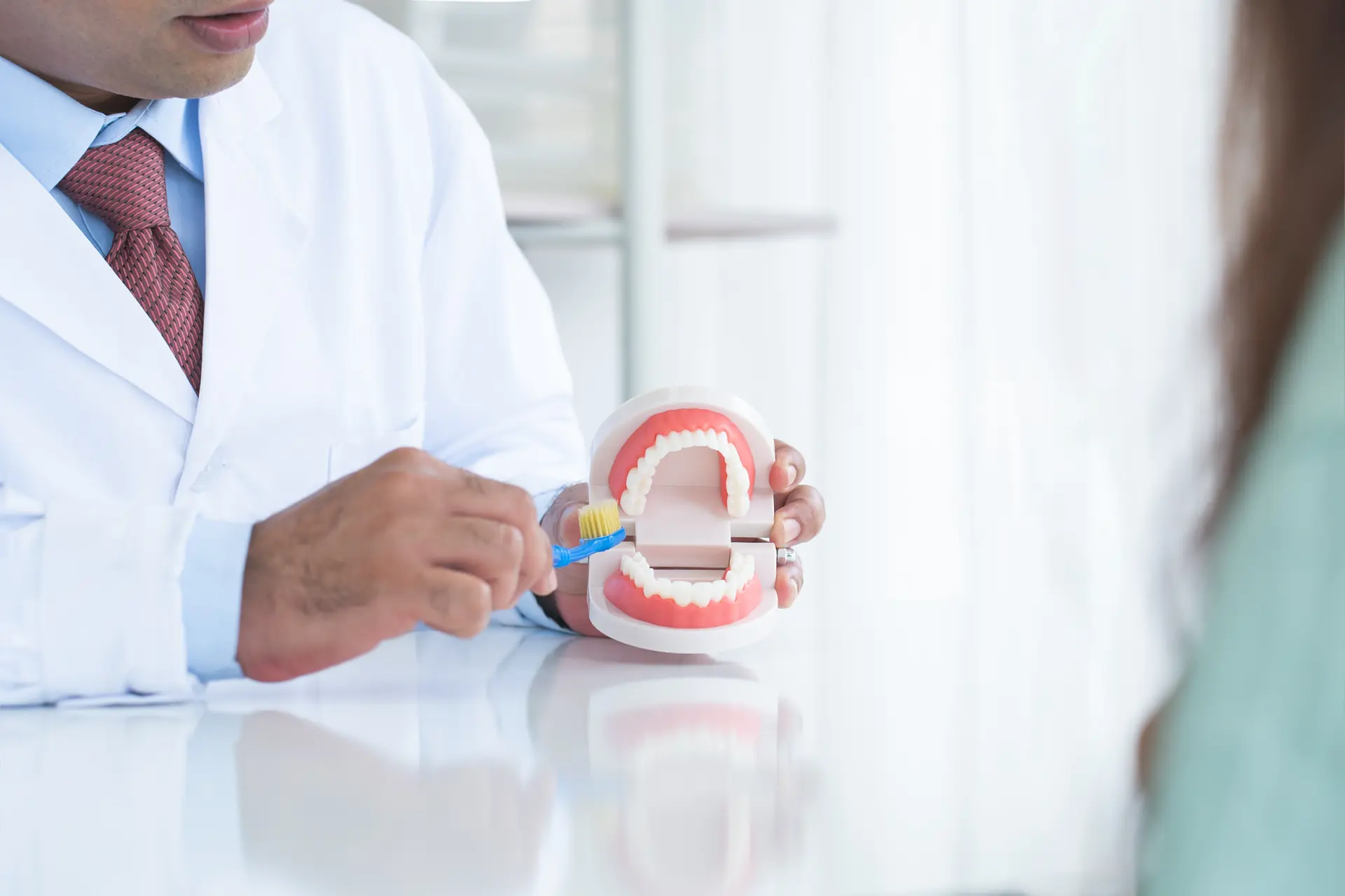For many individuals who wear dentures, achieving a secure and comfortable fit is paramount. While dentures are custom-made to fit the mouth of the wearer precisely, over time, the natural changes in the shape and condition of the mouth can result in a less than perfect fit. That’s where denture adhesives come into play. At River District Smiles Dentistry, we believe in not only providing our patients with the best dental solutions but also in educating them about their options. Let’s delve into the world of denture adhesives, understanding their many benefits and the art of their proper application.
A Closer Look at Denture Adhesives
Denture adhesives are non-toxic, soluble materials designed to be placed in between the denture and the mucosal surface of the mouth. These adhesives work to enhance the natural suction between the denture and the gum, ensuring a snug fit. The most common forms of adhesives include pastes, powders, and pads.
Benefits of Using Denture Adhesives
The first and most obvious benefit is the improved retention and stability of the dentures. When dentures fit securely, there’s a reduced risk of them slipping or moving, particularly during activities like talking, laughing, or eating. This provides the wearer with confidence, knowing they won’t face embarrassing moments caused by a shifting denture.
Another notable advantage is the added comfort. With a layer of adhesive acting as a cushion between the dentures and gums, wearers often find that minor irritations or sore spots are significantly reduced.
Moreover, denture adhesives can act as a barrier to prevent food particles from getting trapped between the denture and gums. This not only makes the dining experience more pleasant but also reduces the risk of gum irritation.
The Art of Proper Application
Using denture adhesives correctly can significantly enhance their efficacy. Here are some tried and tested steps recommended by us at River District Smiles Dentistry:
- Start Clean: Always begin with clean, dry dentures. Any moisture or debris can interfere with the adhesive’s ability to bond properly. It’s also a good practice to rinse your mouth before placing the dentures.
- Use Sparingly: It’s easy to assume that using more adhesive will provide a stronger bond, but that’s not necessarily the case. Over-application can cause oozing and discomfort. Instead, use small amounts, increasing incrementally if needed.
- Apply Evenly: For paste adhesives, apply in short strips or a series of dots, ensuring you don’t put any near the denture edges. If you’re using powder, spread it lightly and evenly over the denture surface. For adhesive pads, trim them to fit your denture if necessary, then moisten slightly to activate the adhesive before positioning.
- Press and Hold: Once the adhesive is applied, place the denture in your mouth and press down firmly for a few seconds. This ensures a secure fit and optimal bonding.
- Avoid Food and Drink: After application, wait for a few minutes before eating or drinking to allow the adhesive to set.
- Nightly Removal: It’s crucial for the health of your gums to remove your dentures and the adhesive every night. This gives your gums a chance to breathe and prevents potential infections. To remove the adhesive, use a soft brush and warm water, or a denture cleaner.
Denture Adhesives Demystified: All You Need to Know
Dentures play a pivotal role in restoring the smiles of many individuals. However, ensuring they fit securely can sometimes be a challenge. Enter the realm of denture adhesives—a solution to snug-fitting dentures. At River District Smiles Dentistry, we’re often asked various questions about these adhesives, and we’re here to provide clarity.
What is a denture adhesive?
- A denture adhesive is a non-toxic, soluble material specifically designed to be placed between the denture and the mucosal surface of the mouth.
- It enhances the natural suction between the denture and the gum, providing a firmer grip and a snug fit.
- The adhesive comes in multiple forms, including pastes, powders, and pads, catering to different preferences.
What are the benefits of denture adhesive?
- Enhanced Stability: The primary benefit is improved retention of the dentures. Wearers can talk, laugh, and eat without worrying about the dentures shifting or falling out.
- Increased Comfort: With a layer of adhesive acting as a buffer, wearers experience less irritation and soreness, especially when the denture doesn’t fit perfectly.
- Food Particle Barrier: The adhesive provides a barrier that prevents food particles from getting trapped between the denture and the gums, reducing gum irritation and enhancing the overall dining experience.
- Boosted Confidence: Knowing that their dentures are secure, wearers often feel more confident in social settings and day-to-day interactions.
How do you apply denture adhesive for the first time?
- Preparation: Begin with clean and dry dentures. Moisture can hinder the adhesive’s bonding capabilities.
- Amount Matters: If you’re using a paste, squeeze a small bead onto the denture, avoiding edges. For powder, lightly sprinkle across the surface, ensuring an even spread. For pads, trim if needed and dampen slightly to activate the adhesive.
- Placement: Gently place the denture in your mouth and press it against your gums. Hold firmly for a few moments to ensure a secure fit.
- First-Time Caution: For those trying it out for the first time, it might feel different. Give yourself time to adjust. If there’s any discomfort, consult your dentist.
What is the best practice for denture adhesives?
- Moderation is Key: It’s essential to avoid over-application. More adhesive doesn’t always mean a better grip; in fact, excessive use can cause oozing and unease.
- Regular Cleaning: At the end of each day, ensure you remove all adhesive residue. Clean your dentures with a soft brush and warm water or a dedicated denture cleaner.
- Give Your Gums a Break: Remove your dentures and the adhesive nightly. This practice ensures your gums have time to breathe and reduces the risk of infections.
- Stay Updated: Over time, as the shape of your mouth naturally changes, you might find the fit of your dentures changing too. Regularly check with your dentist to ensure you’re using the right amount and type of adhesive for your current needs.
In the world of dentistry, little things can make a big difference. Denture adhesives might seem like a small aspect of wearing dentures, but their impact on the comfort and functionality of dentures is significant. At River District Smiles Dentistry, we prioritize educating our clients, ensuring they get the best out of their dental solutions. Remember, every smile counts, and we’re here to make yours shine!


